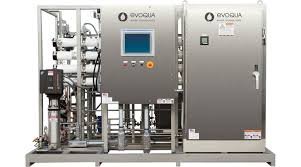Key Takeaways:
- High-purity water systems are critical for operational efficiency in various industries.
- They ensure product safety, enhance quality, and minimize contamination.
- Understanding the components and processes involved can optimize system performance.
- Regular maintenance and monitoring are essential for sustaining purity levels.
- Technological advancements are shaping the future of these water systems.
Understanding High-Purity Water Systems
In the landscape of modern industry, the importance of high-purity water systems cannot be overstated. They ensure operations run smoothly, particularly in biotechnology, pharmaceuticals, and microelectronics fields. In these sectors, water serves as more than just a cleaning agent or solvent; it becomes a critical component of processes where purity is paramount. One could think of it as the lifeblood of production lines. Contaminants, however small, can result in catastrophic product failures or expensive downtimes. According to ScienceDirect, the urgency to maintain such high standards has spurred the development and implementing of sophisticated water purification systems.
Core Components and Processes
Delving into the composition of high purity water systems reveals a network of highly specialized components engineered to remove even the most microscopic impurities. Advanced filters, reverse osmosis membranes, ion exchange units, and ultraviolet light sterilizers are at the heart of these systems. Each plays a unique role, ensuring that the water emerging at the end of the process is of the highest possible purity. The filtration stages are methodically structured to remove particles and bacteria and trace organic materials. With multi-step processes, industry standards are met and often exceeded, providing a robust solution to water quality challenges.
Why Industries Rely on High-Purity Water
The drive for flawless production cannot be decoupled from high-purity water systems. In industries like semiconductor manufacturing, the requirements for water purity are stringent because contaminants at microscopic levels can lead to defective products. For example, a single pollutant in the water used to rinse silicon wafers can compromise the entire batch of semiconductors, resulting in significant financial losses and reputational damage. Therefore, these industries rely on high-purity water like an insurance policy, safeguarding their operations and ensuring they meet the exacting standards set by regulators and customers.
Challenges and Solutions in Water Purity Maintenance
Maintaining the purity of water in industrial systems is challenging. These can range from potential contamination of feedwater to the degradation of filtration components. Regular monitoring and a proactive maintenance regimen are essential in addressing these hurdles. It is about preventing and predicting issues before they escalate into major problems. The latest article from Forbes highlights how cutting-edge technologies like the Internet of Things and artificial intelligence are being employed to streamline the monitoring process, making it more efficient and reducing the need for time-consuming manual checks.
Technological Innovations and Their Impact
The evolution of technology has dramatically influenced how high-purity water systems operate. Real-time monitoring and feedback systems allow operations teams to continuously evaluate water quality, enabling quicker responses to deviations from the desired purity levels. Moreover, developments in nanotechnology have led to more effective filtration membranes that isolate the tiniest particles. These innovations help enhance the efficacy of water systems while minimizing waste and overall costs. As a result, industries can maintain competitive edges by adopting these modernized systems.
Real-Life Applications of High-Purity Water Systems
Consider their broader applications to appreciate the scope of high-purity water systems’ impact. In pharmaceuticals, water is essential for formulation processes and must adhere to pharmacopoeial standards to ensure that drugs are safe for consumption. Hospitals utilize pure water in sterilization, ensuring equipment remains free of bacteria and viruses. Such widespread use across critical sectors underscores the versatility and indispensability of these systems. They are the unsung heroes behind many modern advancements we benefit from but often overlook.
Optimizing Performance and Reducing Costs
The necessity for efficiency compels industries to seek methods that optimize the performance of their high-purity water systems while simultaneously reducing costs. This often involves adopting predictive maintenance schedules, leveraging data analytics to anticipate potential malfunctions, and investing in energy-efficient components. Companies increasingly recognize that these measures cut down on costs and contribute to a smaller environmental footprint, aligning with global sustainability goals.
Future Trends in Water Purification
The future of water purification appears promising, with trends leaning toward digital integration and smarter systems. Technologies like AI-driven monitoring tools, IoT-enabled devices, and data-driven modeling are poised to bring remarkable changes. These technologies offer a precise and predictive approach to water purification, ensuring higher reliability and efficiency. Implementing these advanced systems redefines how industries manage water quality, allowing them to achieve unprecedented purity levels while optimizing resources and reducing environmental impact.
You may also read: Your Gateway to Tech Insights

